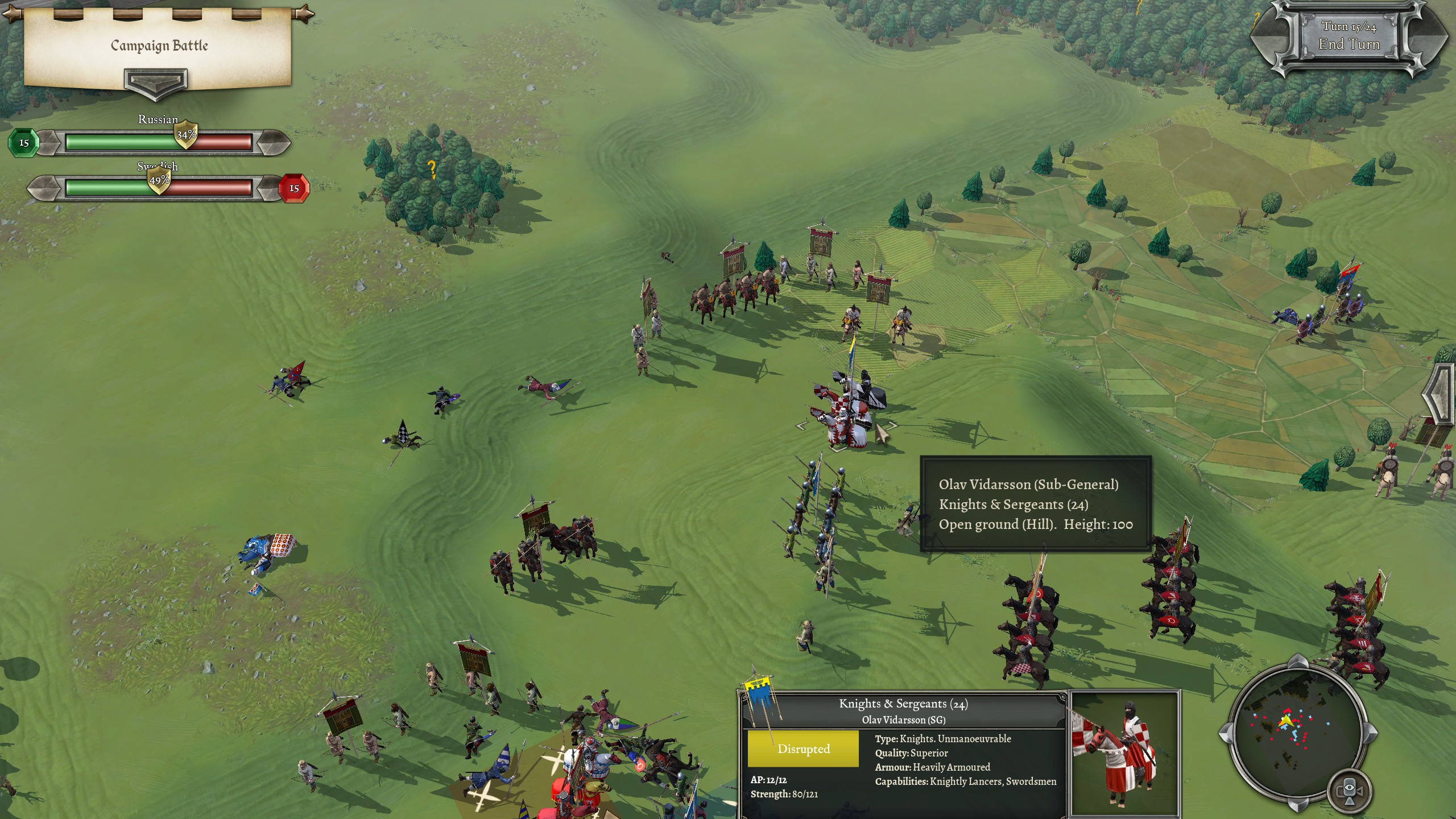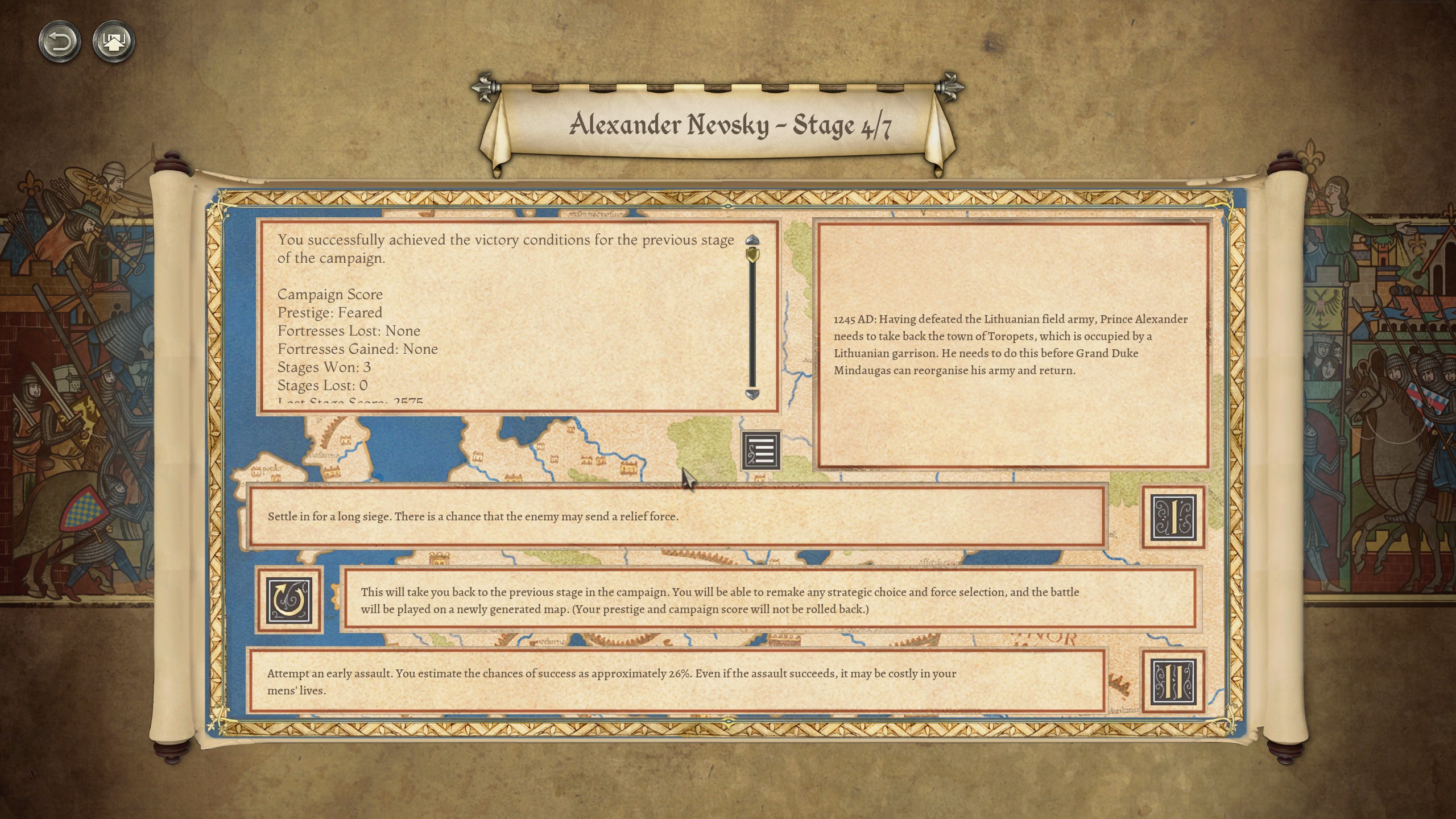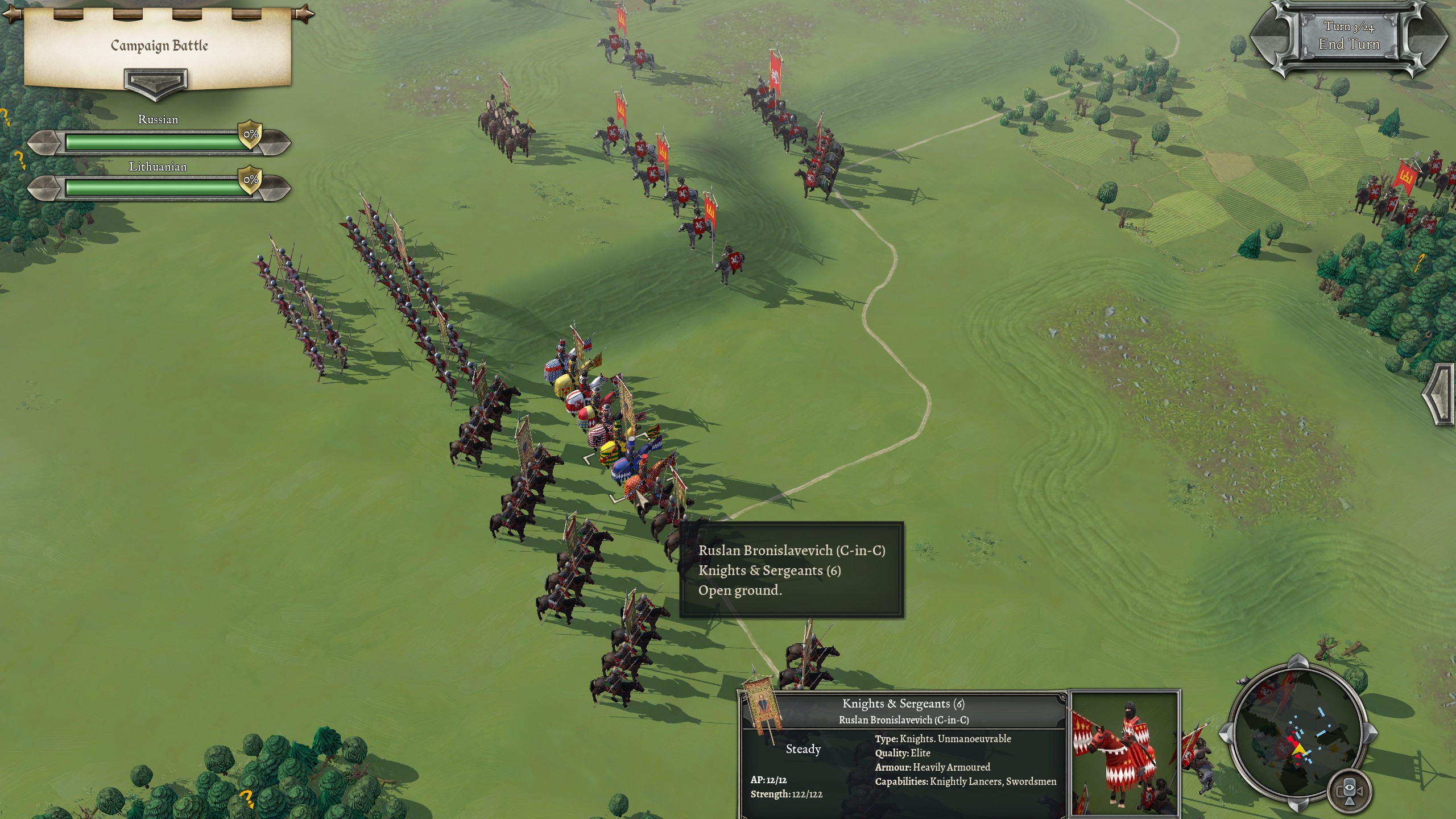Our Verdict
Field of Glory 2: Medieval is the closest to a tabletop miniatures experience you'll get on PC.
PC Gamer's got your back
What is it? Grid-based medieval battle simulation.
Expect to pay $30
Developer Byzantine Games
Publisher Slitherine Ltd.
Reviewed on AMD FX-8350, Nvidia GeForce GTX 1070 Ti, 32GB RAM
Multiplayer? Asynchronous 1v1 competitive
Link Official site
The cavalry is here, y'all! Actually, the cavalry has always been here. We started with the cavalry. This ain't no Ancients-era Field of Glory game. Gone are the blocks of legionaries and swarms of charging barbarians, replaced instead with ranks of spearmen and the thunderous charge of knights in enough armor to make a toaster blush. Field of Glory 2: Medieval delivers an authentic tabletop miniatures wargame experience, but just like a historical wargame whether you like that experience is going to be all about whether you like the rules.
This is a wargamer's wargame. There's no nice music. The graphics are barebones. The UI is pretty basic. You'll want to memorize hotkeys. This could have come out in 2010 and nobody would have blinked. What there is are 50+ hours of historical scenarios and campaigns. The famous battles give you a prearranged battlefield and let you pick a side, then customize it a bit. The historical campaigns give you good context on a fixed route while still letting you make flexible decisions about your army's composition and evolution.
Multiplayer is handled in the same asynchronous style as past Field of Glory games, which is disappointing and frustrating if you want to finish a match in one sitting. It's just functional enough if you can only sit down to play for 15 minutes at a time. Very unimpressive and underwhelming.

FOG 2: Medieval's battles focus on historical simulation over clever or puzzle-like tactics scenarios. It delivers that in spades, with the kind of battles a history buff salivates over. They're dynamic and unpredictable, forcing you into surprising scenarios when troops unexpectedly flee or the enemy makes a sudden surge. You use those rules to take a dizzying array of historical factions through the scenarios.
Randomly generated battles and campaigns are nice, simple, and pretty customizable—you can ask yourself questions like "what if the Mongols made it to France?" or "what if Sweden invaded England?" The custom campaigns don't have much strategic depth, but they do let you carry an army from one fight to the next. They're also excellent if you like the idea of connected scenarios you didn't personally plan: ambushes, rearguard actions, and the like aren't usually situations you put yourself in on purpose. Some of the longer ones will take you a couple of hours.
Battles take so long to play because they're a medieval meatgrinder. Troops lock each other into melee, only sometimes falling back or escaping from that melee due to morale breaking or combat results—neither of which are something you particularly have control over once the brawl begins. Your job is more often than not about choosing favorable positioning and matchups for your troops. You try to deploy your spearmen to tie down the enemy's knights, your light troops in difficult terrain, and your cavalry where they have a place to break through the enemy line.

It's satisfying to fight those battles well. Finding and exploiting the enemy's weak spots is the only thing that keeps fights from becoming a stalemate decided by random chance. If your tactics and strategy aren't up to snuff, however, the battlefield will feel extremely static as units lock into melee with each other and stay there for the rest of the fight. Once the enemy starts to waver and flee their side's morale can cascade fail, with a single fleeing unit prompting its neighbors to run, then their neighbors, and so on.
Battles take so long to play because they're a medieval meatgrinder
That's where the era's premier units really shine. Armored knights on horses are vicious and dangerous shock cavalry, shortly shattering lines of unarmored unmounted men into routs. Well-armored foot can stop them in their path, though, so you have to be careful where you commit your elite troops. Once the enemy starts to run, as is true of the medieval period, your knights are liable to chase them all the way to the edge of the battlefield—sometimes even beyond. It can result in hilarious unexpected situations and is generally a delight: controlling a crowd of violent, rowdy noblemen was the general's lot in the medieval period and FOG2: Medieval really, really gets that.
That aside, some of the game just doesn't feel properly medieval. The time period starts at 1040 and runs to 1270, stopping just short of the grandiose 14th century finale of armored knights, longbows, and mercenary crossbowmen. The ruleset's emphasis on flanking maneuvers over numerical advantage makes a lot of sense in the ancients period, but it feels silly when three units of elite infantry can't make a squad of enemy recruits flee in a single simultaneous assault.

Finally, the fights just tend to stick in one place for too long. It's most noticeable in a scenario like Hastings. The battlefield was supposedly a very dynamic place as one side or the other broke formation to pursue the routing enemy, only to be caught up in a counterattack. In Field of Glory 2's model, fleeing troops only rarely rally and come back to the fight, and you can't set up a fake retreat to lure the AI out of position.
Those shortcomings don't dull the thrill of victory, or the satisfaction of a clever plan playing out. The way battles hang on tense moments and unknown outcomes from chaotic melees is no less tense in Medieval than in previous Field of Glory games. There are a lot of ancients wargames on PC, and it's nice to see the medieval period finally get some turn-based love.
Field of Glory 2: Medieval is the closest to a tabletop miniatures experience you'll get on PC.
Jon Bolding is a games writer and critic with an extensive background in strategy games. When he's not on his PC, he can be found playing every tabletop game under the sun.


